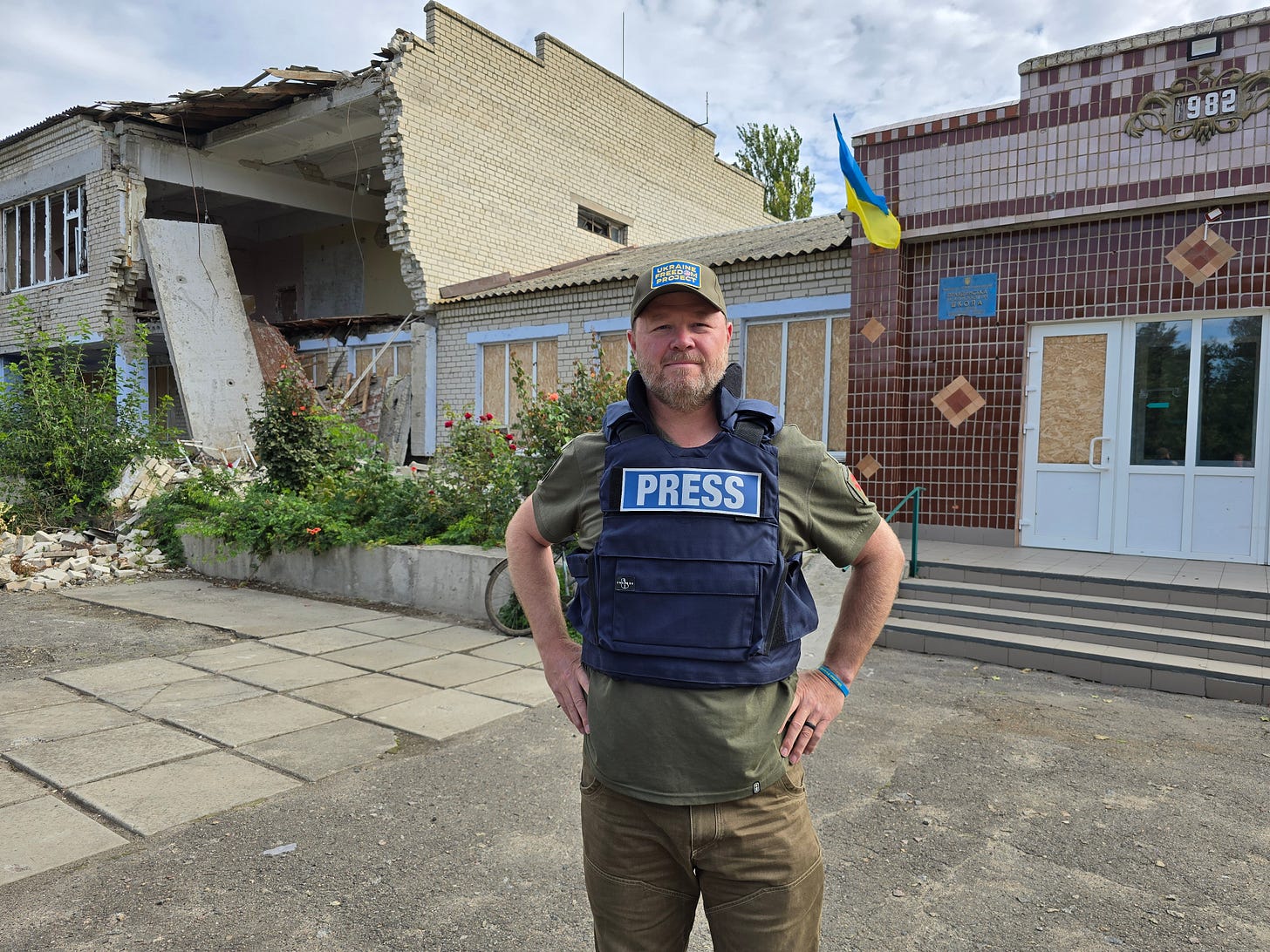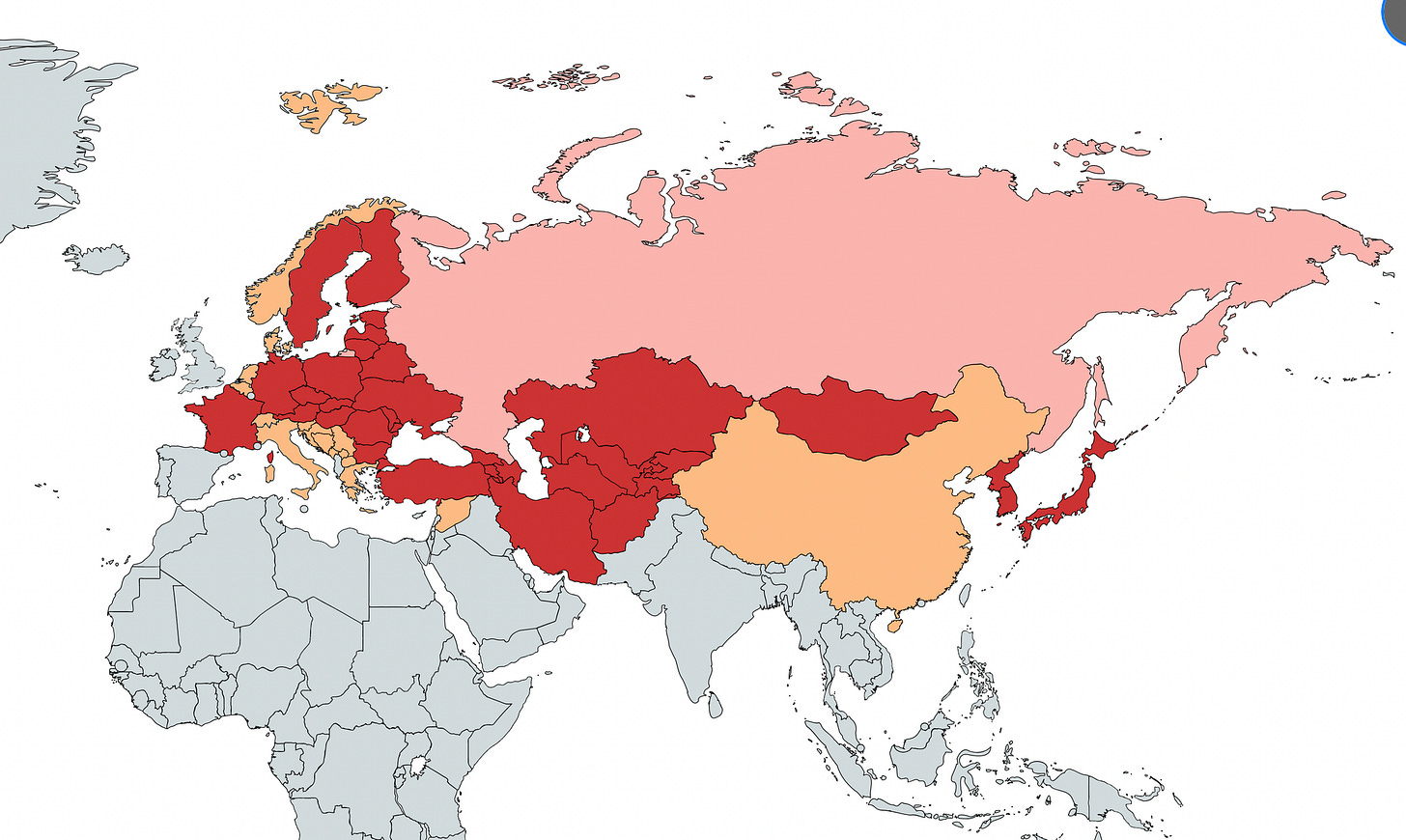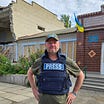No, NATO Expansion Did Not Provoke Putin to Invade Ukraine
Russian aggression drives NATO expansion. NATO membership is expensive and hard. Why would these countries want to join? They fear they are next.
Putin has come up with numerous justifications for invading Ukraine.
He invaded to “denazify” Ukraine, a country where a Jewish president received 73% of the vote in 2019.
He invaded to liberate the Russian speakers in eastern Ukraine, and in the process devastated those areas where the Russian speakers live.
When Islamists attacked a theater in Moscow, Putin added this to his list of justifications, placing the Ukrainians behind the effort.
For domestic audiences, Putin has been pushing the need for ethnic Russians to reproduce so as to fend off Russia’s demographic decline since 2006. Annexing Crimea gave Putin some 2.2 million more ethnic Russians - still a net gain as recruits for his “three day special military operation” are primarily ethnic minorities. Russian officials brag that 700,000 Ukrainian children are now in Russia.
Older underage abductees are being brainwashed by the Russians and sent to the front.

One of Putin’s justifications that has gained traction in Western policy circles is that NATO expansion pushed Putin to invade Ukraine. Apparently, some members of the America First movement have taken the “blame America first” mantle from the liberals.
During Steven’s three years in Ukraine, he has had the honor of speaking to officials from many of the NATO expansion countries that seem so threatening to Putin - Latvia, Lithuania, Estonia, Poland, Finland, Sweden and others.
The theory of NATO expansion conflicts with the story told to him by these NATO countries, all of which share a border with Russia or the Soviet Union or have been occupied by Russia or the Soviet Union at one time or another.

The underpinning of the “NATO expansion” theory is that NATO promised the Soviet Union in 1990 that it would not move “one inch” eastward, implying that all of the countries that joined NATO later broke a promise from the US to Russia.
The problem is that nobody who was involved in the actual negotiations corroborates that claim. Not even then-Soviet leader Mikhail Gorbachev.
Gorbachev later noted that “[t]he topic of ‘NATO expansion’ was not discussed at all, and it wasn’t brought up in those years. I say this with full responsibility.”
James Baker, who as George H.W. Bush’s Secretary of State negotiated many agreements ending the Cold War, did indeed say that NATO wouldn’t go “one inch” further East if the Soviet Union agreed to allow Germany to reunite. This wasn’t, however, a discussion about countries joining NATO. It was simply a promise that NATO troops would not move into East Germany. This wasn’t about NATO expansion, it was about the location of NATO forces in a soon-to-be unified Germany.
And Baker kept his word. Speaking in 2014 about the negotiations, Gorbachev said “[e]verything that could have been and needed to be done to solidify that political obligation was done. And fulfilled.”
Here is the question that proponents of this theory forget to ask. NATO membership is expensive and hard. Why would these countries want to join? The great happy hour specials at the officers club in Brussels?
Countries that had lived under the Soviet boot were quick to want to join NATO after the fall of the Soviet Union. Demand for membership increased in 1994 as the world began to see that Russia had not shed its aggressive nature. Chechnya declared independence from Russia in 1993, which brought on a bloody invasion by Russian troops leaving tens of thousands of civilians dead and paved the way for Putin to come to power.
Chechnya defeated the Russians and achieved independence, but for Poland, Czechia and Hungary, this seemed a lot like the Soviet invasions of their countries in 1939, 1956 and 1968 respectively. Those countries worked hard to meet the requirements to be the first eastern bloc nations to join NATO in 1999.
That year saw another war in Chechnya, this one manufactured by Putin. In 1997, the Yeltsin family plucked Putin out of relative obscurity in St. Petersburg. Mistaking him for someone they could manipulate to protect their wealth and safety after Yeltsin left office, they made him prime minister. A lifelong KGB officer, Putin employed his espionage network to blow up apartment buildings in cities across Russia and make it look like the Chechens did it. The deaths of 300 Russian civilians terrorized the nation. Putin’s skilled handling of the “crisis” propelled Putin from prime minister to president.
Five years later, NATO admitted its biggest class, known as the Vilnius Group - Bulgaria, Estonia, Latvia, Lithuania, Romania, Slovakia and Slovenia.
Russian aggression is what drives NATO expansion.
Similarly, Russia’s recent aggression drove Finland and Sweden into NATO. They have been studiously neutral for decades. Putin’s aggression has expanded NATO once more.
These new countries are not sitting back and enjoying a free ride under the American military umbrella. The closer a NATO country is to Russia, the more it spends on defense. Poland and Estonia both spend a higher percentage of their GDP on defense than the United States. NATO estimates that 23 of its 32 members will reach the required 2% of GDP on defense spending. Spain and Italy are laggards at national security spending. When looking for countries to kick out of NATO, maybe that is where we should start.
NATO membership and increased defense spending aren’t the cause of Putin’s aggression, they are the result of it.
No, “broken promises” around NATO expansion didn’t cause Russia to invade Ukraine. If there is an underlying promise that was broken in this conflict, it was made in 1994, in Budapest by the USA and the UK. At the time, Ukraine was the third-largest nuclear power on the planet. At the urging of the United States and United Kingdom, Ukraine gave Russia all of its nuclear weapons in return for security guarantees from Russia, the US, and the UK.
That Russia would break its word to Ukraine was foreseeable. That the US would slow-roll aid under one administration and then threaten to end it entirely under the next is perhaps as embarrassing for our nation as claiming that NATO expansion caused this conflict in the first place should be for geopolitical commentators.
This piece was co-authored with Steven by Colby Barrett. Colby is a Colorado based entrepreneur and documentary filmmaker who spent much of September touring Ukraine’s hotspots shooting a film telling the story of how Ukraine’s Christian community has suffered at the hands of the Russians.






Knowledge is the main antidote to disinformation. Exploring and studying Ukrainian history is the key to understanding the war. The genocide against Ukrainian people started not 1,000 days ago (addressing the narrative that NATO was the reason for the escalation), not 10 years ago (addressing the narrative about a sponsored coup in Kyiv in 2014), but centuries ago.
In the 1930s, there was no Zelenskyy, Putin, or NATO. But there was a genocide committed by the Kremlin against Ukrainians — 3-5 million people were starved to death.
Learning Ukrainian history, and decolonising it from Russian optics, is the way to see the continuity of Russian policies and crimes against Ukraine and humanity.
With the U.S. only sending about 10% of the promised aid so far drones have been becoming more important of a weapon all the time.
I was just reading an article as to how the drones do about 80% of the damage to the Russian troops and equipment. The article went on say that Ukrainian drone operators have become a prime target for the Russians.
A soldier reported that they hardly ever hear HIMARS any longer due to lack of restocking. Ukraine is slowly running out of weapons and men.
Steve: I am curious on your thoughts as to why the western countries are slowly arming Ukraine giving them just enough weapons to keep them in the war but not enough to kick Russia out of Ukraine. What is their end game? Are they trying to weaken Russia and force Ukraine into peace talks while conceding land to Russia and establishing new boarders? Thoughts?